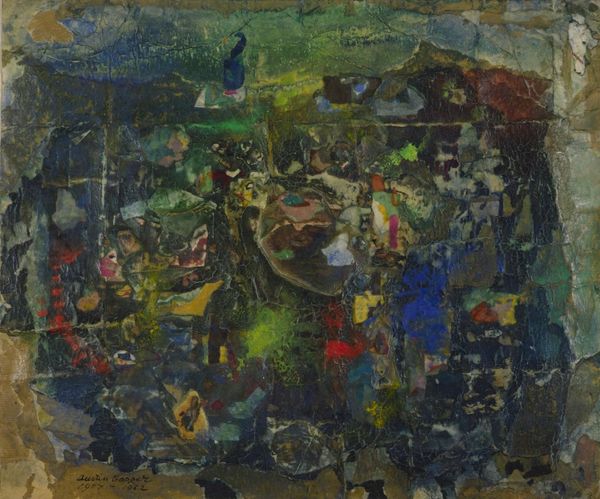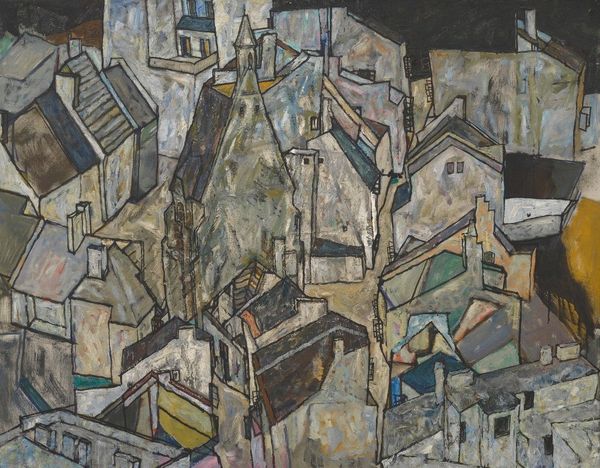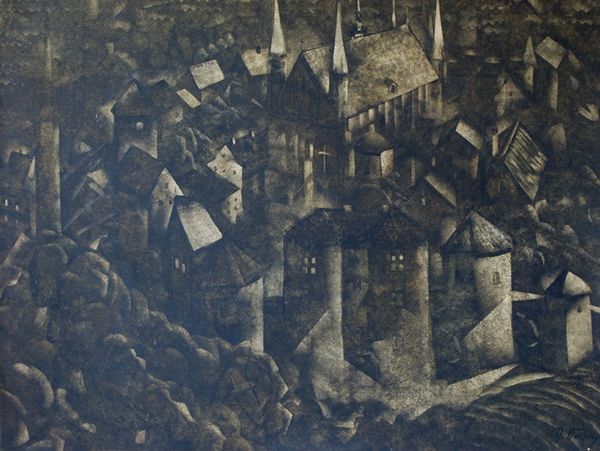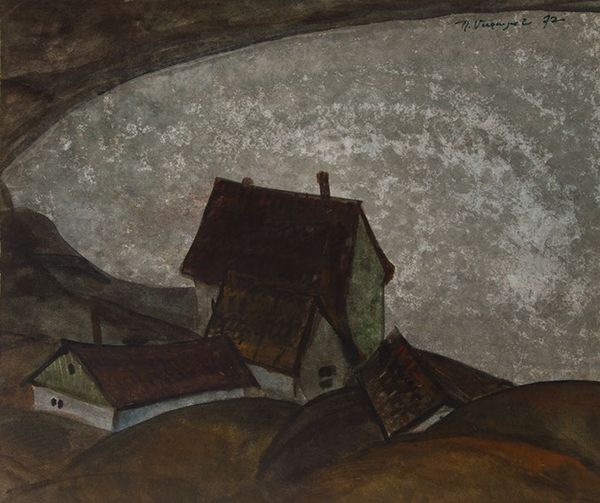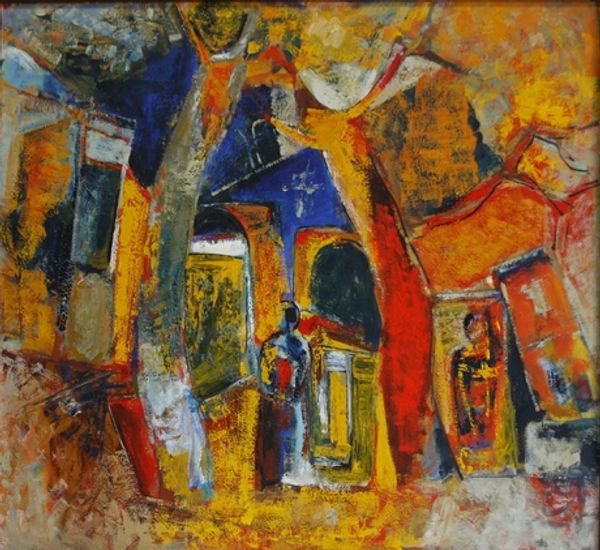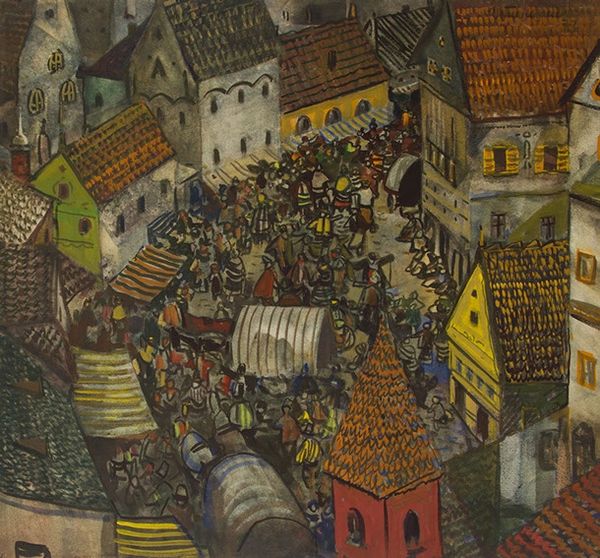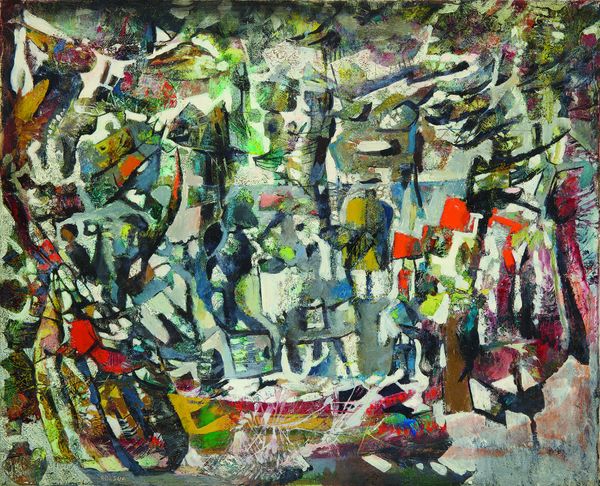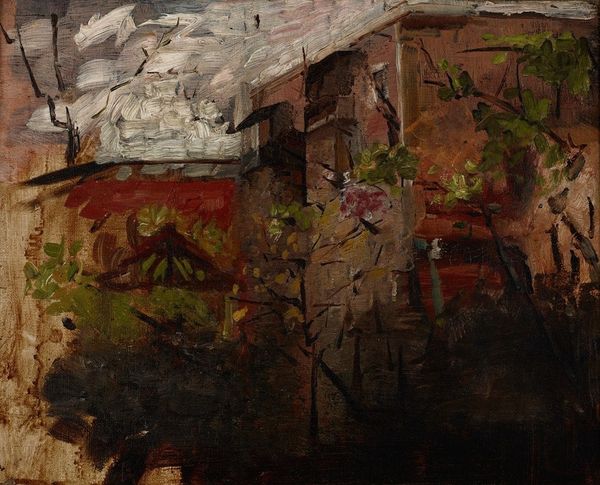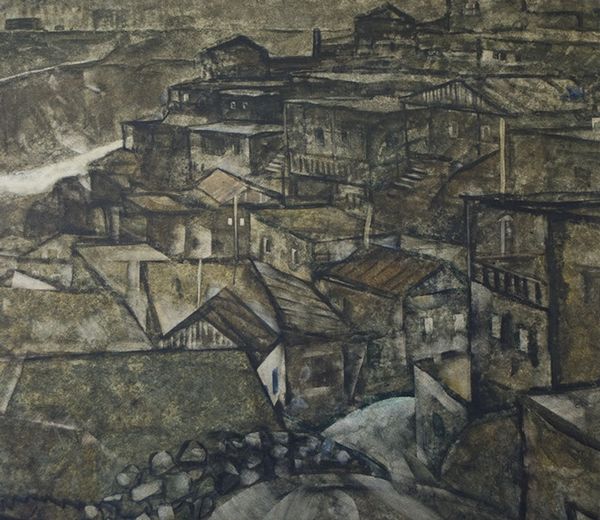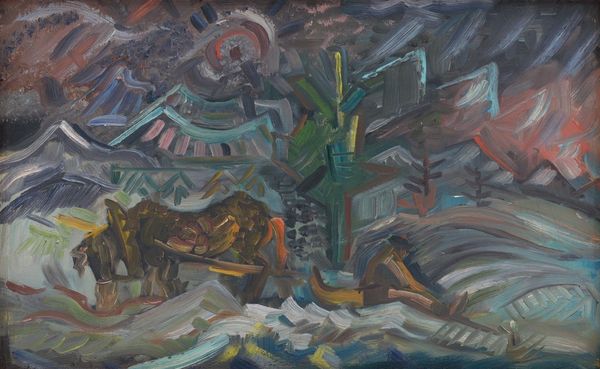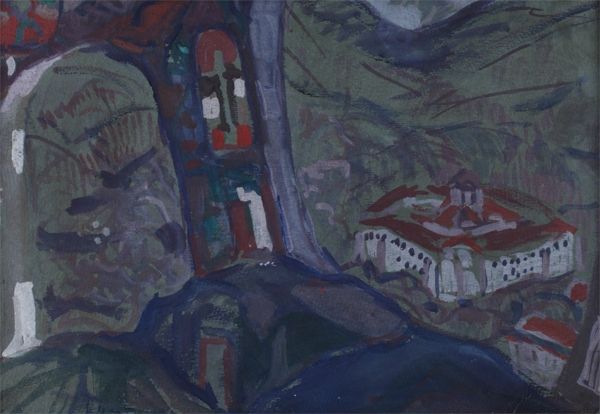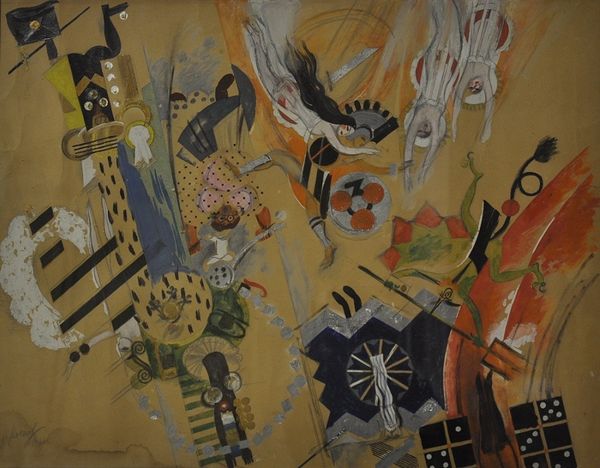
#
possibly oil pastel
#
acrylic on canvas
#
coloured pencil
#
underpainting
#
painting painterly
#
watercolour bleed
#
watercolour illustration
#
mixed medium
#
mixed media
#
watercolor
Copyright: Petros Malayan,Fair Use
Curator: Petros Malayan’s “Shop Fair," created in 1972, seems to portray a bustling marketplace scene rendered in, perhaps, mixed media? The tags indicate watercolour and coloured pencil, but also the suggestion of an acrylic underpainting, making it difficult to confirm what exactly. What’s your initial impression? Editor: I’m immediately struck by its somewhat melancholic, almost sepia-toned palette. It definitely evokes a sense of movement but also feels somehow trapped in history, like peering into a world long past, maybe suggestive of historical inequities linked to trade? Curator: Absolutely. The technique itself seems to embody that tension. Looking closer, the linework seems almost hurried, practical, possibly referencing the fast pace and labor conditions involved in the original event represented here. How do you see this reflected socio-historically? Editor: Well, fairs throughout history have been places of exchange, both of goods and ideas. I find it impossible not to view the crowded space depicted here with an awareness of hierarchies operating within markets and even their accessibility to varying social strata. The people and what they may own and do not. Curator: Interesting. Speaking of production and making visible...I'm curious if there are artistic influences that he brings to his work? It is unclear based on what’s listed of the different artistic gestures made, but something I would pursue, that you would likely then view from your political lens. Editor: Most likely. In a period where cultural identity was suppressed by Soviet Ideology, even simply turning toward national subjects, as in fair representation of the pre-modern market, itself has activist and oppositional implications in its moment, speaking through national themes even during periods of assimilation and integration by the Communist government in Armenia in this time. Curator: It speaks, however indirectly, about social organization through commodity exchange which reflects how communities organized themselves on a practical, day-to-day basis. These interactions and the objects themselves contain narratives reflecting labor and local tradition. It suggests cultural continuity while documenting the transient moment of trade within a space of exchange, no? Editor: Definitely. Its muted tones speak volumes, echoing themes of memory, loss, but also endurance that become prevalent themes when considering post-Soviet identity, even decades later. Curator: Well, it's undeniable that this "Shop Fair" leaves us with much to consider concerning artistic process, material use and that of its context as well. Editor: Indeed. The layers of historical implications layered into what, at first glance, seems a relatively simple scene, continue to reverberate.
Comments
No comments
Be the first to comment and join the conversation on the ultimate creative platform.
